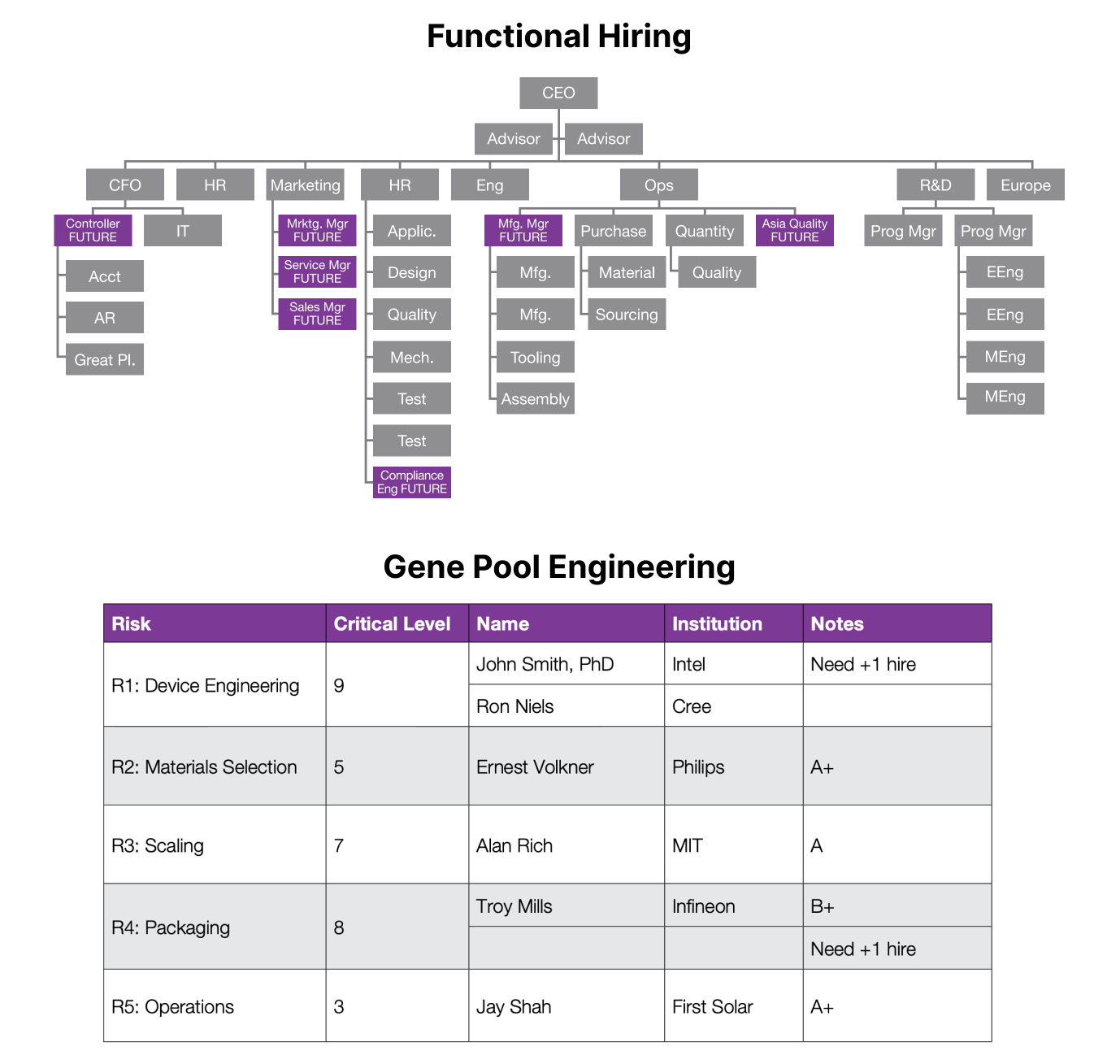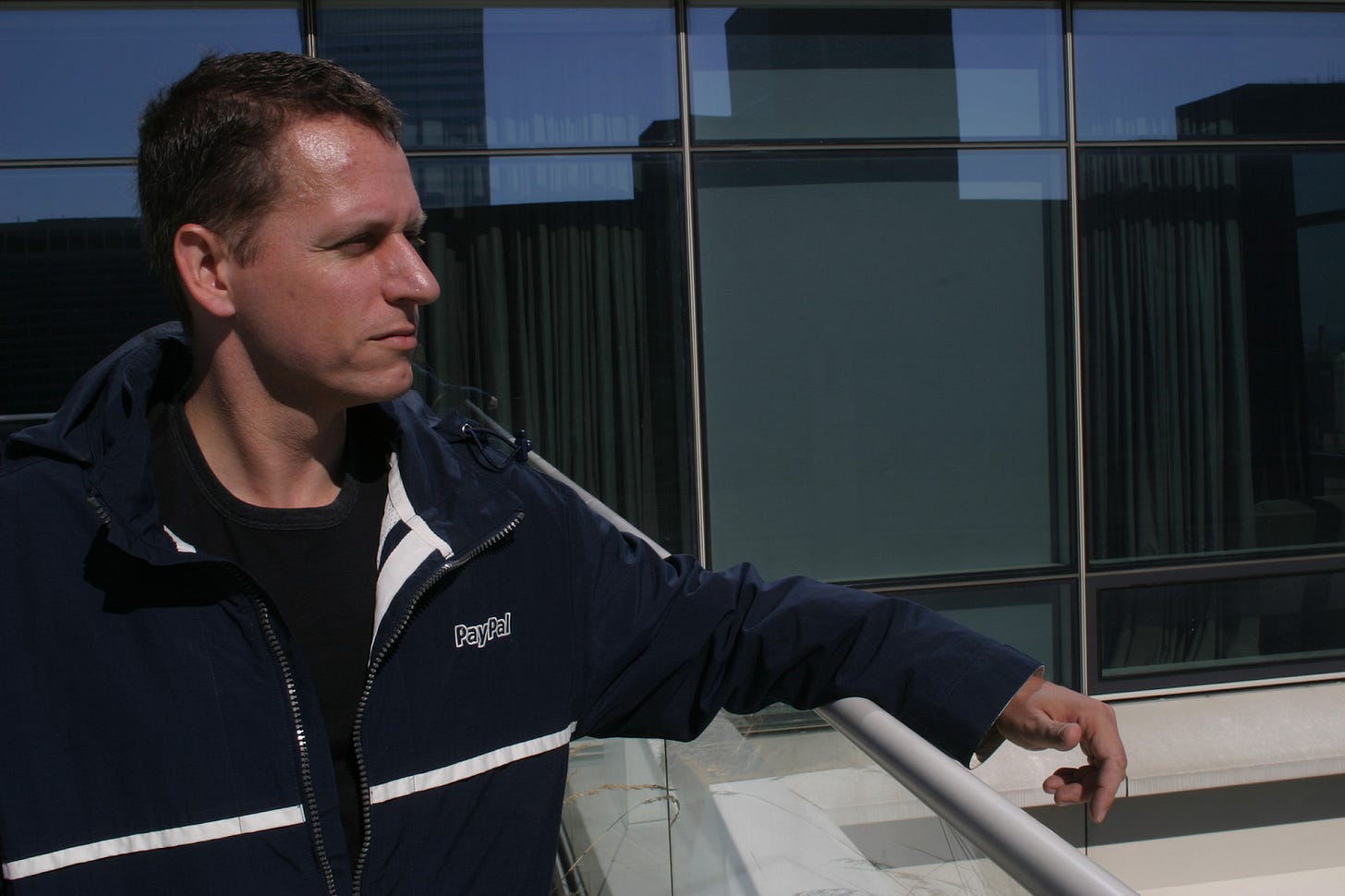Transaction Cost and Risk Elimination: Lessons from Thiel, Rabois, Bezos, and Khosla
On the Nature of the Firm and Risks.
Peter Thiel famously made PayPal employees focus on a single problem. Jeff Bezos mandated all teams to expose external interfaces to the services they built. In his Gene Pool Engineering paper, Vinod Khosla asserted that a startup must hire to eliminate the risks it faces.
What do these seminal management ideas have in common? They all contribute to the elimination of risk, transaction costs, or both, by employing a modular organisation.
Transaction Cost Theory
In his Nobel Prize-winning college essay, The Nature of the Firm economist Ronald Coase argued that firms exist to eliminate transaction costs.
Imagine a scenario in which a company outsources every single one of its tasks to an army of contractors. The company uses the free market to select the best and cheapest services. All these contractors compete with each other for these jobs.
However, this would result in a lot of contracts and back and forth. Moreover, collaborations often create additional value not captured by the initial contract. This is a case of the hold-up problem, which arises when unforeseeable changes in the collaboration's value or terms increase one party's bargaining power, leading to renegotiation or conflict.
As the number of contracts increases, so does the level of detail within each, often reducing the flexibility available to contractors. This specificity can constrain their ability to address unforeseen challenges creatively or adapt their approach as needed, leading to potential inefficiencies and suboptimal or unintended outcomes.
Companies hire full-time employees to eliminate these transaction costs.
Carl Dahlman later described three of the major types of transaction cost: Search cost, bargaining cost, and enforcement cost. In his essay about marketplaces, Dan Hockenmaier added a fourth: Distribution cost.
But transactions within a company also have a cost. These are called organizational costs. They include:
Coordination Costs
Communication Costs
Planning and Scheduling Costs
Management Costs
Supervision and Monitoring Costs
Decision-Making Costs
Administrative Costs
Record-Keeping and Reporting Costs
Compliance Costs
Human Resource Costs
Recruitment and Training Costs
Employee Benefits and Compensation Costs
Operational Costs
Inventory Management Costs
Maintenance and Repair Costs
Notably, as organizational networks expand, transaction costs can increase quadratically rather than linearly, a kind of reverse network effect where costs escalate disproportionately with network growth.
I’m fascinated by what product or platform would need to exist so that more contract work becomes possible and valuable. What transaction cost can we eliminate now that we couldn’t before? If you feel similarly excited about these ideas or contract work platforms in general and would like to discuss this further feel free to reply to this email or dm me on X.
Around 2002, Jeff Bezos issued his famous API mandate, which later partly leaked. In it, he described how teams within Amazon should interface with each other to reduce transaction costs. (Bezos’ famous Two-Pizza Teams rule has a similar objective).
The mandate enforces a modular organization and architecture design. Each module, or an internally developed service, is now less “internal” (company-internal instead of team-internal). The entire organization can now utilize and criticize the module’s effectiveness.
Four years after the API mandate was shared, Amazon released S3 and EC2. The success of these and other AWS services demonstrates the effectiveness of his approach. AWS not only improved Amazon’s operations but also eliminated the transaction cost of Amazon’s customers developing and maintaining their own infrastructure.
Amazon shows that Coase’s insights apply not only to companies but also to teams within companies. The modular, API-driven approach also eliminated significant risks for his company, including lack of standards, documentation, excessive or unnecessary communication, and an inability to capture the value of initial internal services sold to the free market.
Paul Graham wrote:
[A] large organization could only avoid slowing down if they avoided tree structure. And since human nature limits the size of group that can work together, the only way I can imagine for larger groups to avoid tree structure would be to have no structure: to have each group actually be independent, and to work together the way components of a market economy do.
Risk Elimination
Most startup founders just hire to fill functional vacancies when uncompleted tasks pile up. Most managers or CEOs give a handful of tasks with differing priorities to their reports and hope that all get completed. Khosla and Thiel suggest that this is wrong.
In his article, Gene Pool Engineering For Entrepreneurs, Vinod Khosla recommends hiring people that are able to solve the problems that reflect the company's biggest current or future risks. The steps in this process are:
Identify the five largest risks facing the company.
Define the skill sets necessary to address those risks.
Locate centers of excellence for each risk (institutions to hire from).
List top experts at each center of excellence.
Recruit candidates from this “gene pool” to build a diverse team.
Counterintuitively, many pre-PMF (Product Market Fit) startups obsess about only hiring engineers. However, in this situation, they’d be better served by hiring an experienced PM or engineer with a product background that can help eliminate the risk of not finding PMF.
Khosla’s recruiting philosophy follows the process of derisking a startup idea. (Leo Polovet from Susa/Humba Ventures wrote a great post about startup de-risking). In some cases, Gene Pool Engineering can be part of the de-risking process if your startup inception depends on bringing together the right experts.
In his book Zero to One Peter Thiel wrote:
The best thing I did as a manager at PayPal was to make every person in the company responsible for doing just one thing. Every employee’s one thing was unique, and everyone knew I would evaluate him only on that one thing. I had started doing this just to simplify the task of managing people. But then I noticed a deeper result: defining roles reduced conflict. Most fights inside a company happen when colleagues compete for the same responsibilities. [...]. Eliminating competition makes it easier for everyone to build the kinds of long-term relationships that transcend mere professionalism.
Keith Rabois (ex. PayPal’s executive and Founders Fund partner) recalls that Thiel “would refuse to discuss virtually anything else with you except what was currently assigned as your #1 initiative.”
A big benefit of this strategy comes from the reduced cognitive load that context-switching between projects or tasks requires. There is always an opportunity cost to starting a new task vs. finishing the existing one. This also applies to personal projects. This switching cost can be seen as a type of transaction cost.
In another account Rabois phrased this strategy as:
[This] philosophy of building a startup is to take on the most challenging problems first, not the easiest. A lot of people focus on the things that they know how to solve, and they do them, and they defer solving the really intricate, difficult technology, unit economics, or customer acquisition problems until later.
If you don't innovate, and you don't come up with interesting breakthroughs, your company isn't going to be one of the companies that people remember forever.
As an illustration, he mentioned Stripe deferring to innovate on the financial risk function, even though this issue almost killed PayPal in 2001. Because Stripe’s founders knew that other companies had already proven it could be done, it could be safely deferred until much later.
This “One Thing” management strategy not only focuses on eliminating the most pressing risks the company faces but also reduces organisation costs of competition between employees for tasks.
In organizational design, this strategy is called Single-threaded leadership (STL). A computer program that is single-threaded processes one process at a time.
Jeff Wilke (Ex-CEO of Amazon's worldwide consumer business) wrote:
Separable means almost as separable organizationally as APIs are for software. Single-threaded means they don’t work on anything else.
This organisation around key initiatives (or risks) enables the organizations to run more initiatives in parallel. Another tenant of STLs is to minimize dependencies to other parts of the organisation (or companies). This allows teams to complete tasks without blocking, waiting for, or aligning decisions with others.
Conclusion
One shared theme of these strategies is that they make the organisation more modular. The design advantage of (hierarchical) modular systems is that they permit a quasi-independent evolution of their parts. Here are some examples:
Automotive Industry: Car manufacturers can upgrade individual components like transmissions without overhauling the entire engine, reducing the risk of cascading failures and associated costs.
Engineering Design: Chip designers enhance processor speeds independently of peripheral components like keyboards or USB ports, mitigating risks related to full-system upgrades.
Software Engineering: Modular and uncoupled code facilitates easier refactoring and maintenance, decreasing the risk of introducing bugs across unrelated modules and reducing maintenance costs.
Corporate Architecture: Companies with modular architectures can more readily outsource tasks, allowing them to expand product features or incorporate vendor-supplied services more efficiently, thus reducing both risk and transaction costs.
Biological Sciences: In genetics, the localized impact of mutations shows the advantages of modular biological systems in managing risks associated with genetic variations.
Hiring: Companies mitigate significant risks and decrease search and training costs by strategically hiring employees with specific skills to address these risks.
Marketplaces: Platforms like Zillow, eBay, Airbnb, and Amazon tailor their services to efficiently eliminate specific risks and transaction costs—search, bargaining, enforcement, and distribution—faced by the parties, as reflected in their varying commission structures.
In summary, organizations tackle key risks and reduce various transaction cost via a modular organisation.
Thanks to Varun Shenoy, Brian Chau, Logan Chipkin, Martin Thaulow, Bart Vanderhaegen, and others for giving feedback on drafts of this.







Two asides on this idea of modular design - the new NYC Google office is built to be customizable and adaptable to teams in different departments. Sort of adding an architectural modularity.
And then your last pic reminded me of crystal lattice structures which have different atomic configurations and probably could make a good metaphor or mental model one day
Really cool!!